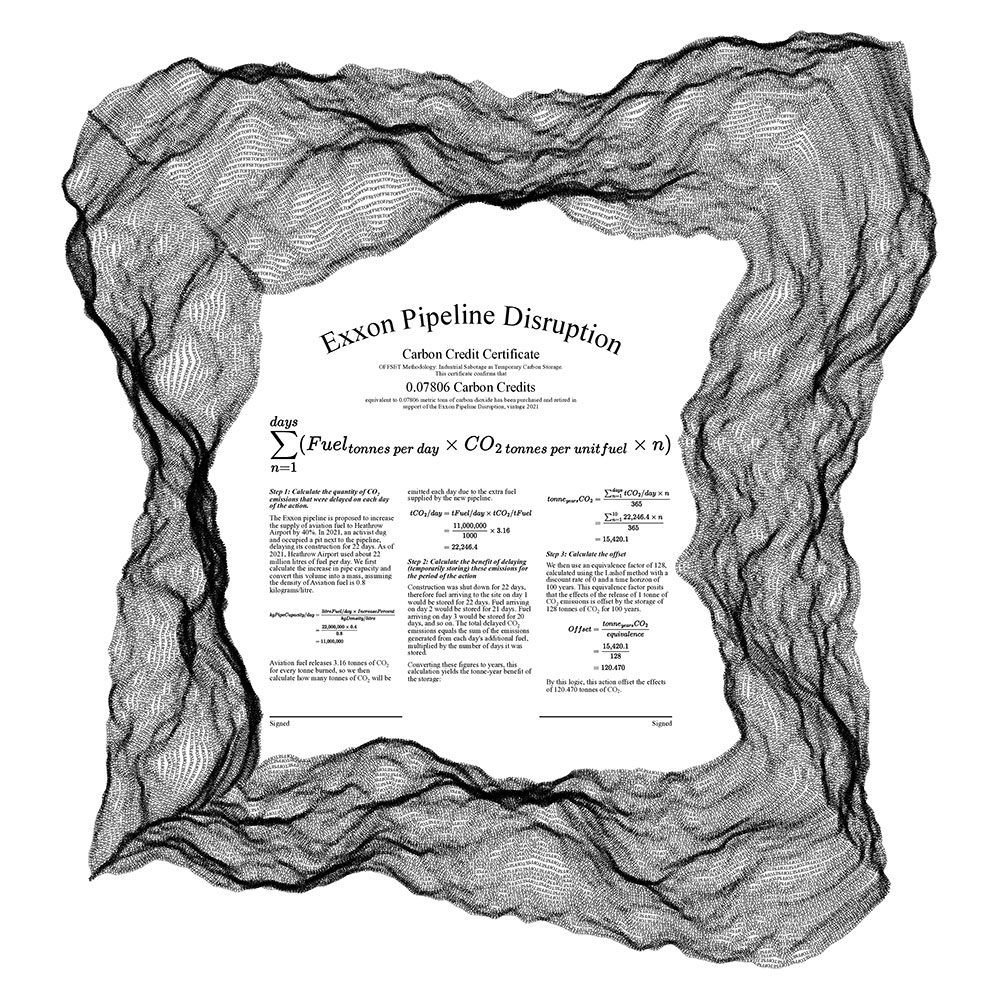Exxon Pipeline Disruption
 $200 carbon credit certificate retiring 0.07806 tons of CO2
$200 carbon credit certificate retiring 0.07806 tons of CO2

Methodology
Step 1: Calculate the quantity of CO2 emissions that were delayed on each day of the action
The Exxon pipeline is proposed to increase the supply of aviation fuel to Heathrow Airport by 40%.1 In 2021, an activist dug and occupied a pit next to the pipeline, delaying its construction for 22 days. As of 2021, Heathrow Airport used about 22 million litres of fuel per day.2 We first calculate the increase in pipe capacity and convert this volume into a mass, assuming the density of Aviation fuel is 0.8 kilograms/litre.3
Aviation fuel releases 3.16 tonnes of CO2 for every tonne burned4, so we then calculate how many tonnes of CO2 will be emitted each day due to the extra fuel supplied by the new pipeline.
Step 2: Calculate the benefit of delaying (temporarily storing) these emissions for the period of the action
Construction was shut down for 22 days, therefore fuel arriving to the site on day 1 would be stored for 22 days. Fuel arriving on day 2 would be stored for 21 days. Fuel arriving on day 3 would be stored for 20 days, and so on. The total delayed CO2 emissions equals the sum of the emissions generated from each day's additional fuel, multiplied by the number of days it was stored.
Converting these figures to years, this calculation yields the tonne-year benefit of the storage:
Step 3: Calculate the offset
We then use an equivalence factor of 128, calculated using the Lashof method with a discount rate of 0 and a time horizon of 100 years.6 7 This equivalence factor posits that the effects of the release of 1 tonne of CO2 emissions is offset by the storage of 128 tonnes of CO2 for 100 years.
By this logic, this action offset the effects of 120.470 tonnes of CO2.
-
https://www.geoengineer.org/news/helical-piles-solution-for-extending-london-heathrow-airports-rail-fuel-terminal-platform ↩
-
https://www.chevron.com - media chevron operations documents aviation-tech-review.pdf ↩
-
https://www.icao.int/environmental-protection/CarbonOffset/Documents/Methodology ICAO Carbon Calculator_v10-2017.pdf ↩
-
https://www.independent.co.uk/climate-change/news/esso-oil-pipeline-injunction-protest-b2145689.html ↩
-
Chay et. al. calculate this equivalence factor using Lashof. Chay et. al. (2022) Unpacking ton-year accounting. Carbon(plan). Online: https://carbonplan.org/research/ton-year-explainer ↩
-
Fearnside et. al. (2000) Accounting for time in mitigating global warming through land-use change and forestry. Mitigation and adaptation strategies for global change. ↩